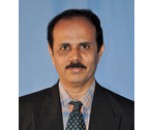
Rupakula Ravichandra Babu
GitamUniversity, India
Title: Role of GC-MS and LC-MS/MS in pharmaceutical industry with special reference to Quantification of genotoxic impurities
Biography
Biography: Rupakula Ravichandra Babu
Abstract
Pharmaceutical genotoxic impurities (PGIs) may induce genetic mutations, chromosomal breaks (rearrangements) and they have potential to cause cancer in human was observed by Bolt et al.1 Jacobson and McGovern2 investigated that exposure to even low levels of such impurities present in final active pharmaceutical ingredient (API) may be of significant toxicological importance. Hence it is important for process chemists to avoid such genotoxic impurities in the manufacturing process3. However, it would be difficult or impossible to eliminate PGIs completely from the synthetic scheme. Therefore, it is a great challenge to analytical chemists to develop an appropriate analytical method to quantify the impurity accurately and control their levels in APIs. According to the European Medicines Agency (EMEA) and feedback from US Food and Drug Administration (USFDA) the proposed use of a threshold of toxicological concern (TTC), it is accepted that genotoxic impurities will be limited to a daily dose of 1.0– 1.5 µg/day4, The present study was undertaken to develop a sensitive and rapid LC-MS/MS method for the determination of genotoxic impurity in Esmolol Hydrochloride API and the quantification of genotoxic impurity in Ketobomodine hydrochloride using GC-MS technique. The newly developed methods were validated according to ICH guidelines.

